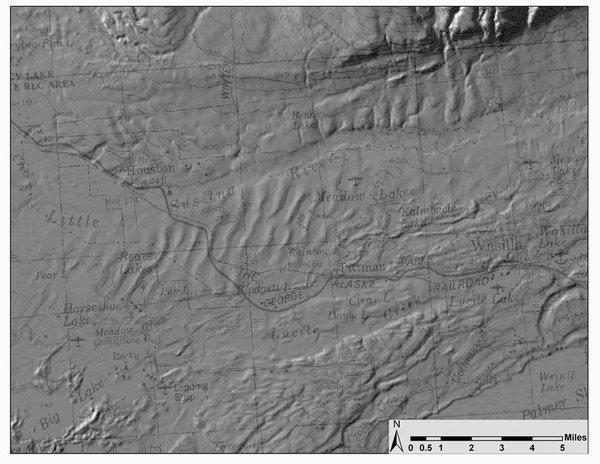by Ian Juby | May 8, 2010 | CrEvo News Bites

(photo courtesy of Phil Battley, from Plosbiology Creative commons licensing)
From the “Incredible creation” files, satellite tracking tags on migratory birds have now demonstrated a shattered record for long-distance migration.
Known migration patterns are already amazing, what with examples like the hummingbird crossing the Gulf of Mexico in one flight, the American Golden Plovers flying 4,000 kms between Nova Scotia and South America, and the Red Knots flying 4,800 kms between the Wadden sea and Taymyr.
The hummingbird takes between 18 and 24 hours to fly across the Gulf of Mexico (depending on weather) – let’s say it’s an average of 20 hours. At an average of 40 beats per second, that’s 2,880,000 wing beats, non-stop!
But all of this is nothing. With the aid of ultra-small satellite tracking tags on the Alaskan bar-tailed godwit, a new record has been set.
Are you sitting down?
We now know that the godwit flies from Alaska to Australia in one, 8-day, 11,000 km, non-stop flight.
http://www.plosbiology.org/article/info:doi/10.1371/journal.pbio.1000362
An extended-range 747 jumbo jet can fly ~14,000 kms, whereas the new double-decker airbus 380 (shown below) can fly around 15,000 kms.
Such aircraft require a lot of careful engineering just for the guidance systems, let alone flight control, etc… No one would make the preposterous suggestion that these aircraft were not designed. And yet the godwit blows the doors off the aircraft in efficiency, energy consumption, internal guidance system, etc… In fact, a couple of the godwits that were originally tagged didn’t make it to New Zealand because the tags messed up the design of the bird! The satellite tags had to be re-engineered and surgically implanted so as not to interfere with the flight of the bird.
All throughout the Plos article, you can see the necessary nod to evolutionism that must be made in any scientific publication (lest you be barred from being a “real scientist”), and yet the authors are stymied and can’t help but use the word “design:”
“Fit for Purpose—What Is the Optimal Design for Long-Distance Flight?”
“We know that the godwit displays no exceptional design features…”
They also can’t figure out how on earth all of this could have evolved – or why for that matter.
“How Did Such Long-Distance Migration Evolve?”
” It is unlikely that naïve short distance migratory birds accidentally reached
New Zealand to establish this migration route…”
Well, the reason they can’t figure out how or why such a system evolved is because the godwit was incredibly designed.
“CrEvo News Bites” are short commentaries from Ian Juby on current events relating to creation and evolution. You can subscribe by visiting his blog at: https://ianjuby.org/newsletter. He has many informative hours of video available for free viewing on line, including his exhaustive, 12-hour “Complete Creation” video series – a veritable video encyclopedia. http://completecreation.orghttp://youtube.com/wazooloo
by Ian Juby | May 7, 2010 | CrEvo News Bites
Today’s New Bite is actually old news – a meteorite reported on back in 1996, claimed to be from mars, and allegedly containing fossils of bacteria within.

(Photo courtesy NASA)
The original research was rejected by the majority of scientists – and with good reason. However, the researchers have brought it back from the dead to go for another round.
Now of course, the meteorite wasn’t found on mars, it was found in Antarctica! So how then do we know the rock came from mars? Science is based on observation, using our five senses (even if those senses are extended by machinery), so as it was so aptly put by ScienceAgainstEvolution.org, we know the rock came from mars because:
a) it looks like it came from mars
b) it smells like it came from mars
c) it tastes like it came from mars
d) it sounds like it came from mars
e) it feels like it came from mars
When you glance through the Washington post article, you’ll notice:
“the meteorites they are studying — which can be identified as Martian because the gases inside them match the Martian atmosphere — contain the remains of living organisms.”
So then according to NASA, the correct answer is b) we know the rock is from mars because it smells like it came from mars. There is no other reason to believe the meteorite came from mars.
So the source of the rock is highly questionable at best. Then there’s the matter of the “fossil bacteria” found within the rock, which has been hotly debated by the evolutionary scientists themselves, with the majority rejecting the “fossils” as such, and instead claiming these are nothing more then geological artifacts.
The “martian meteor” researcher, McKay “pointed to the presence of what appear to be fossilized microbes in other Martian meteorites,” according to Washington post. Now hold on a minute here: Let’s say that this is true. Let’s say that yes, there are multiple meteorites that have been found with fossil bacteria in them. The idea that multiple meteorites could be launched from mars, each with fossil bacteria in them, on a favourable trajectory that allowed the meteorites to land on earth, is stretching credibility to the breaking point frankly.
Instead, I would suggest that a far more feasible explanation would be that these rocks came from earth, and are simply returning home. “How?” you might ask, to which I would simply encourage you to read through Dr. Walter T. Brown’s hydroplate model, and in particular his chapter on the origin of comets, meteoroids and asteroids. His entire book is available on line, for free at http://creationscience.com
This is a vastly superior model to any evolutionary model which has rocks from mars somehow magically getting ejected into space and landing on earth.
“CrEvo News Bites” are short commentaries from Ian Juby on current events relating to creation and evolution. You can subscribe by visiting his blog at: https://ianjuby.org/newsletter. He has many informative hours of video available for free viewing on line, including his exhaustive, 12-hour “Complete Creation” video series – a veritable video encyclopedia. http://completecreation.orghttp://youtube.com/wazooloo
by Ian Juby | May 4, 2010 | CrEvo News Bites
Ten times in the first chapter of Genesis, it is stated that God created everything to reproduce after its kind. So in other words, according to creation, we should see things staying the same over time and faithfully reproducing after their kind. Of course, evolution has organisms changing over time – and changing lots.
When one looks in the fossil record, what we see is stasis and extinction – both of which fit well within the creation paradigm, but run opposite the predictions that evolutionary theory would make.
So even playing by the evolutionary rules, the evidence does not stack up for evolution. A recent study (using evolutionary assumptions and rules) is now saying the same thing from genetics:
http://www.sciencedaily.com/releases/2010/04/100429172956.htm
In the words of Science Daily,
“A genetic study of island lizards shows that even those that have been geographically isolated
for many millions of years have not evolved into separate species as predicted by conventional evolutionary theory.”
The lizards in the study, even given evolutionary assumptions of millions of years, still interbreed with each other and have not been isolated into different “species.” This is just one more piece of evidence that evolution is simply not true, but does match the Biblical account of creation.
by Ian Juby | Apr 29, 2010 | CrEvo News Bites
From Fox News:
http://www.foxnews.com/scitech/2010/04/28/flying-dinosaur-reptile-pterosaur-texas/
A new, Ptoothy Pterodactyl which was unearthed in Ptexas in 2006, is now being reported. Of course, such discoveries are always assigned an evolutionary age of millions and millions of years. Question: How do they know how old it is? Answer: They don’t – it’s assumed. You can’t date sedimentary rocks using radiometric dating methods, but usually there’s biomatter in dinosaur bones – which does mean it can be carbon dated.
Herein lies the problem: C14 (Carbon 14) dating methods always return ages of between 5,000 years old and 50,000 years old, no matter the alleged “age” of the fossil bone, oil, coal, natural gas, CO2 from gas wells, etc… All of these examples are supposed to be many millions of years old, which means they should have ZERO C14 in them. The fact that they have plenty tells you right off the bat they are not millions of years old, they are only a few thousand years old.
Further to this, did you ever notice that the fossil record only shows two things: Extinction, and stasis. I don’t think I need to explain extinction, but I will point out that this does not help evolution one bit – extinction is a loss of variety, a loss of a species, not a gain as evolution needs.
Stasis is an organism remaining the same over alleged millions of years. The Coelacanth is a classic example. The Bible says (ten times in the first chapter of Genesis) that God created everything to reproduce after its kind. Evolution has organisms changing over time. Stasis is what we find in the fossil record, not change – and I give a few examples of this in part 10 of “The Complete Creation” video series, available for viewing for free on the complete creation website:
http://completecreation.org/
by Ian Juby | Apr 29, 2010 | CrEvo News Bites

(Photo by NASA)
Splashed across the headlines of the past two days are the “discoveries” of ice and organic materials on an asteroid.
http://www.sciencedaily.com/releases/2010/04/100428142302.htm
Actually, this is old news – spectrascopic analysis of comet tails had already shown gases like methane, presumed to be from decaying biomatter in the comet. Asteroids have been known for a while now to have considerable water content – so really this is nothing new. Further to this, meteorites have been found containing water, salt, and at least two meteorites have been found with living bacteria contained within them.
(http://www.creationscience.com/onlinebook/Asteroids2.html see heading “Meteorites return home” near the bottom of the page)
Of course the evolutionary theorists like to point to this, speculating that perhaps Earth was “seeded” from space with life, which then evolved. This does not answer the un-answerable problem of the origin of the first life – it is simply an attempt to put the problem as far away as possible, and as long ago as possible. (Now picture the Star Wars opening screen, text scrolling off into the distance, “In a galaxy far, far, far, far, far, away, many, many, many, many billions of years ago, the impossible became probable, and the probable became inevitable because of the extreme distance and time…”)
So far as we know, the laws of physics and nature still apply in the far reaches of the solar system. Therefore, well-established scientific and natural laws apply there – laws like the law of biogenesis which states that life only arises from life, and there has never been an observed exception to this rule, hence the reason it is a law.
An explanation that is far, far, far more plausible is that the water, salt, and bacteria (and possible decaying biomatter) in the asteroids, comets and meteorites came from Earth. For one theory as to how this could happen, do take the time to read the hydroplate theory put together by Dr. Walter T. Brown, and in particular, pay attention to this “Origin of Asteroids and Meteoroids” chapter:
http://www.creationscience.com/onlinebook/Asteroids2.html
by Ian Juby | Apr 29, 2010 | CrEvo News Bites

(Giant wave ripples in Alaska, photo courtesy of Michael Wiedmer, as shown in Quaternary Research)
From Science News:
http://www.sciencedaily.com/releases/2010/04/100428142338.htm
Oh look – giant wave ripples in Alaska! From a “megaflood.” Now notice that whenever chatter is made of megafloods, it is always in reference to an ice-age lake breaching its dam. Well, 100 foot high wave ripples, spaced a half-mile apart is a pretty big lake. Reading the article, you’ll notice the researchers are not afraid to use catastrophic terms – as long as it does not refer to a global flood.
Such giant wave ripple features are not at all uncommon either. This is what led to the discovery of the Missoula flood (not much doubt that one was an ice-age lake), and you can see giant wave ripples all over Alberta, Manitoba, and at several locations here in Ontario.
While I don’t doubt that some of these are from ice-age lakes, I would suggest that at least some of these giant wave ripples are actually from the receding flood waters of the global flood. But, because evolutionary thinking does not allow for there to have been a global flood, this possibility is not even considered – in spite of the evidence, not because of it.
I should be clear too: Evolution will not permit consideration of a global flood. Science is perfectly open to it – there is a difference between the two. Science pursues the facts, Evolution does not even permit possibilities – the opposite of science.
Here are some KMZ links for Google Earth/Worldwind to view the giant wave ripples in Alaska and Manitoba:
Alaska: https://ianjuby.org/newsletters/giant_alaska_dunes.kmz
Manitoba: https://ianjuby.org/newsletters/manitoba_wave_ripples.kmz
The wave ripples in Manitoba are about 1 kilometer, crest-to-crest, and up to 15 meters high. I know this because I went and personally studied them after seeing them from a jetliner.







